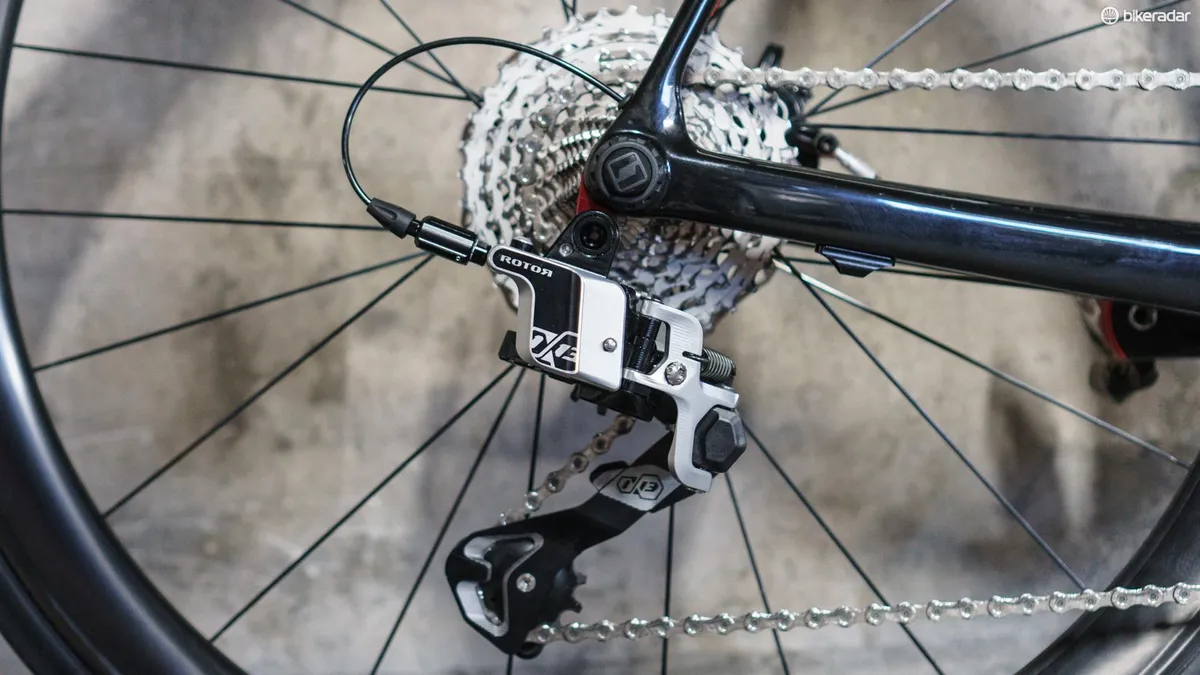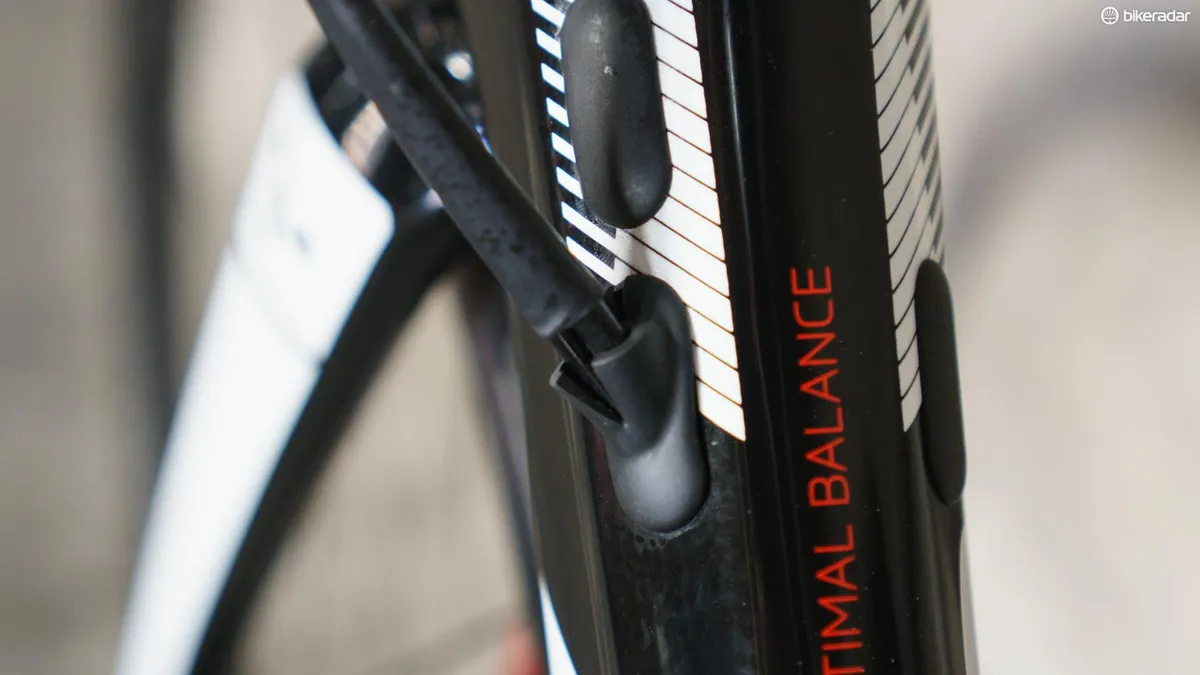Rotor’s 1x13 groupset is an expensive engineering marvel that has a few small issues. Choosing to buy it over more established options would be a completely irrational decision for most of us but, despite its faults, I can’t help but love it.
It’s an impressive feat of engineering that occupies a space in the market that few have dared try to enter, and that alone deserves recognition.
- Rotor 1x13 hydraulic groupset: weights, price, specs, details
- Road bike groupsets: everything you need to know
What is Rotor 1x13?
Check out our full review of the groupset on our YouTube channel
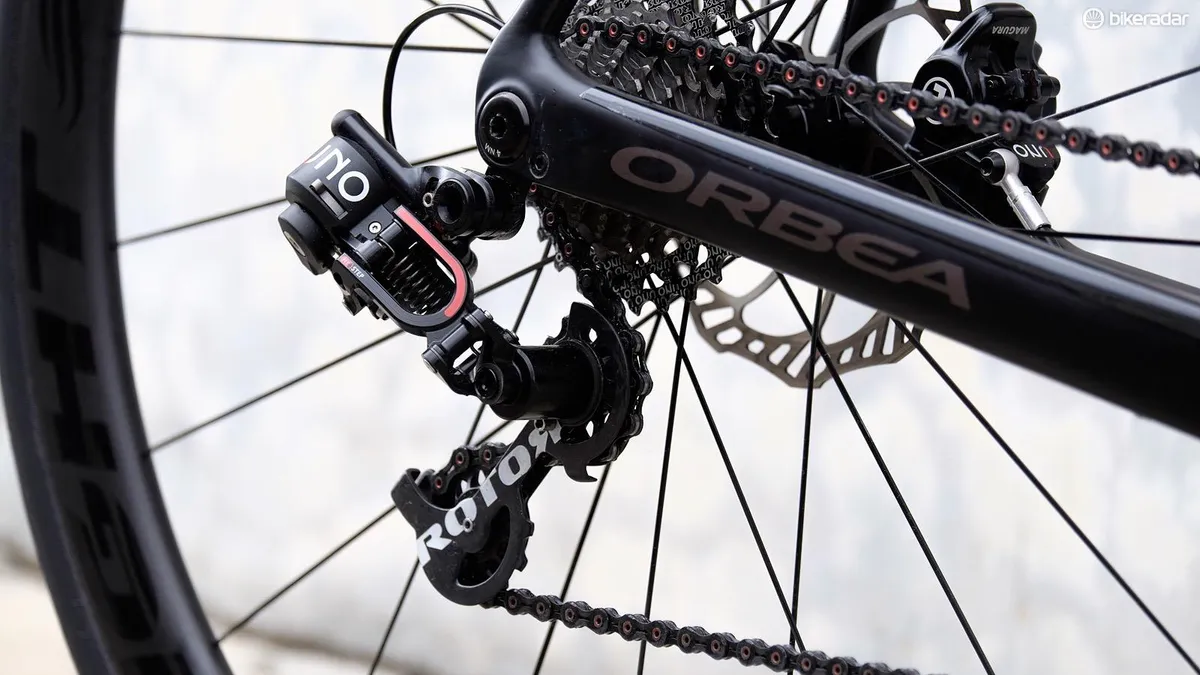
Rotor’s 1x13 (and to be clear, it is just called 1x13) groupset officially launched at last year’s edition of EuroBike. It follows in the footsteps of Rotor’s UNO groupset, a 2x hydraulic groupset that it first released back in 2016.
The Rotor 1x13 is a highly modular hydraulically-actuated groupset that is designed to work across all disciplines, from mountain biking to road riding and everything in between.
As the name suggests, it is a single-ring-only 13-speed groupset and a world first.
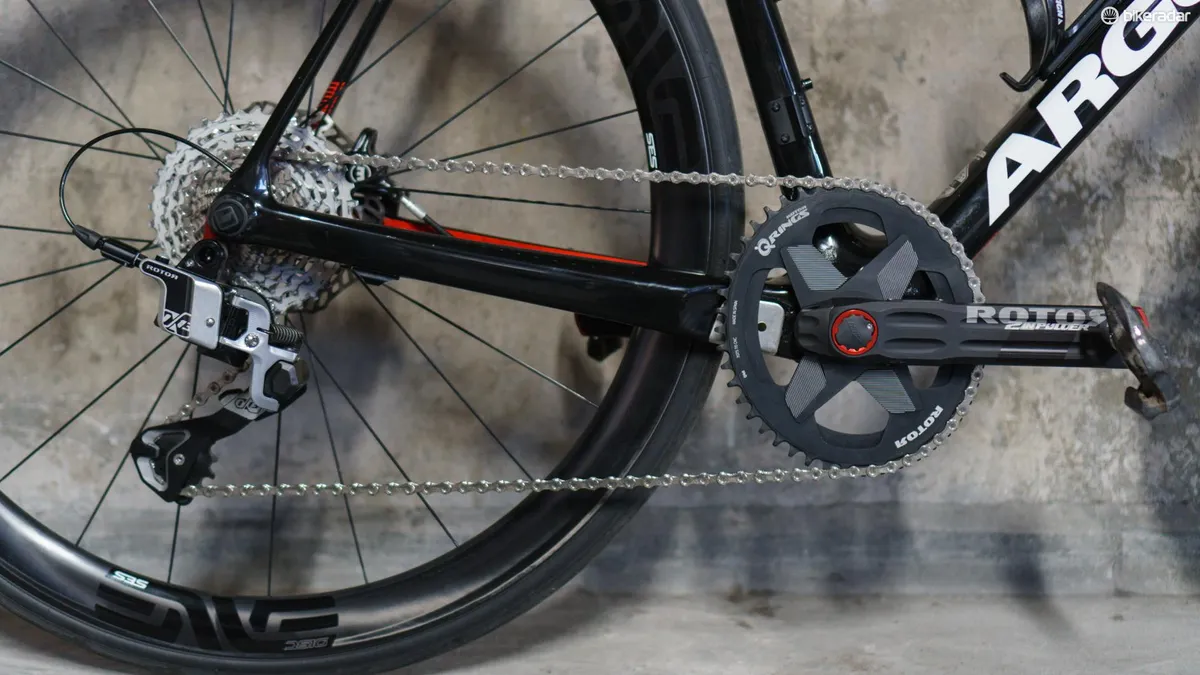
The groupset is available in four distinct build kits and the full specs, prices and details can be found in our original overview.
My test bike was fitted with the 1x13 Groupset Kit 2INpower build kit. The only difference from this stock build was the use of ENVE rims over Rotor’s own.
- Groupset claimed weight — 2,550g
- Price — £3,999 / $4,900 / €4,499
Why did Rotor go with hydraulic shifting?
That the groupset is 13-speed is, of course, interesting but it’s the use of hydraulic actuation that really sets it apart.
Conventional mechanical shifting works perfectly well for most of us, with the remaining few satisfied with the improved performance and reduced maintenance of electronic groupsets. So why go hydraulic in the first place?
As mentioned, Rotor had already introduced this system with UNO in 2016 and it decided to go down this route for two key reasons.
Firstly, it wanted to do something totally different to the big three mainstream drivetrain manufacturers — such a small company was unlikely to take a significant portion of sales, even at the super-high-end of the drivetrain market, so it saw creating an alternative to mechanical and electronic groupsets as a good way to stand out.
Secondly, the previous work of the big three dictated many of Rotor’s design decisions — SRAM, Shimano and Campagnolo have a firm grasp on drivetrain design patents, so breaking into the market is extremely difficult.
Rotor also claims that a hydraulic system offers a number of advantages over conventional systems. Primarily, the sealed shift system should, in theory, mean it requires far less maintenance than a mechanical groupset. Unlike an electronic groupset, there are also no batteries to worry about.
A note on this review
I’ve had a few short weeks to ride the groupset, but I have put in a lot of miles, which I feel is more than enough time to give a comprehensive overview of its performance but I cannot pass judgement on installation or the groupset's long-term durability. I’m hoping that Rotor will send us a mountain bike version of the groupset later this year, so there’s a good chance we will revisit this review then.
Rotor 1x13 shifting performance
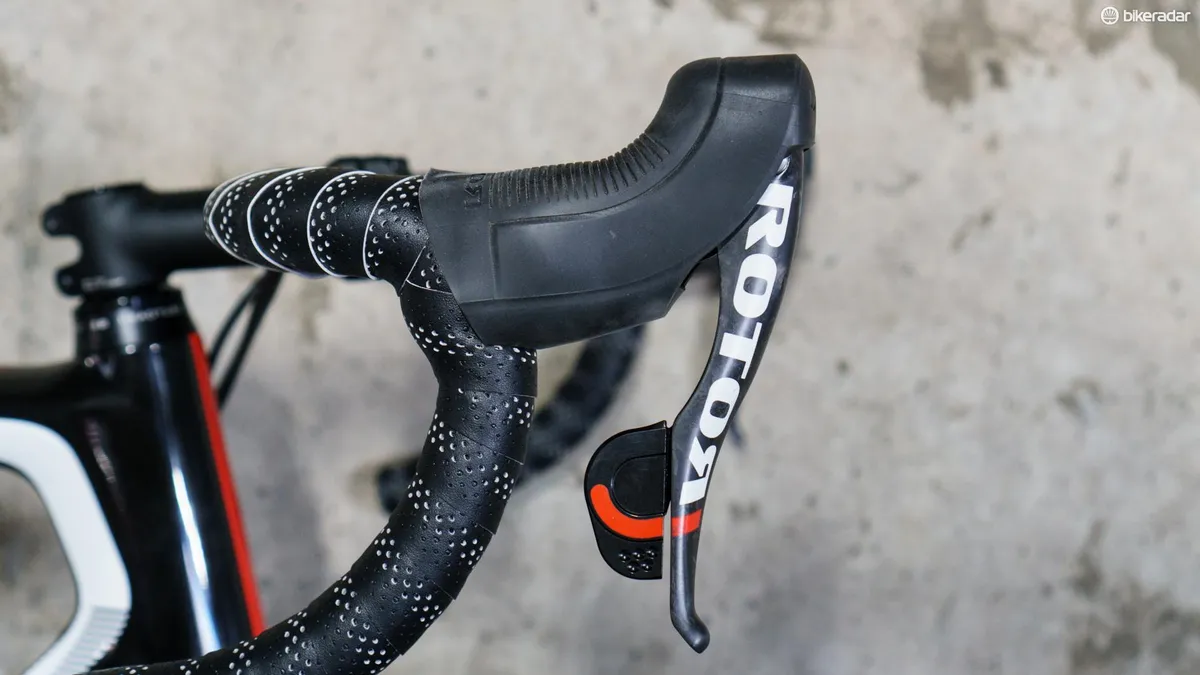
While both Oli and Matthew were impressed by the overall performance of UNO, neither got on with the front shifting performance. With its four trim positions and vague overall feel, it just didn’t stack up well enough compared to conventional drivetrains.
However, by taking the front derailleur out of the equation with a 1x setup the groupset becomes, on paper at least, a more compelling option.
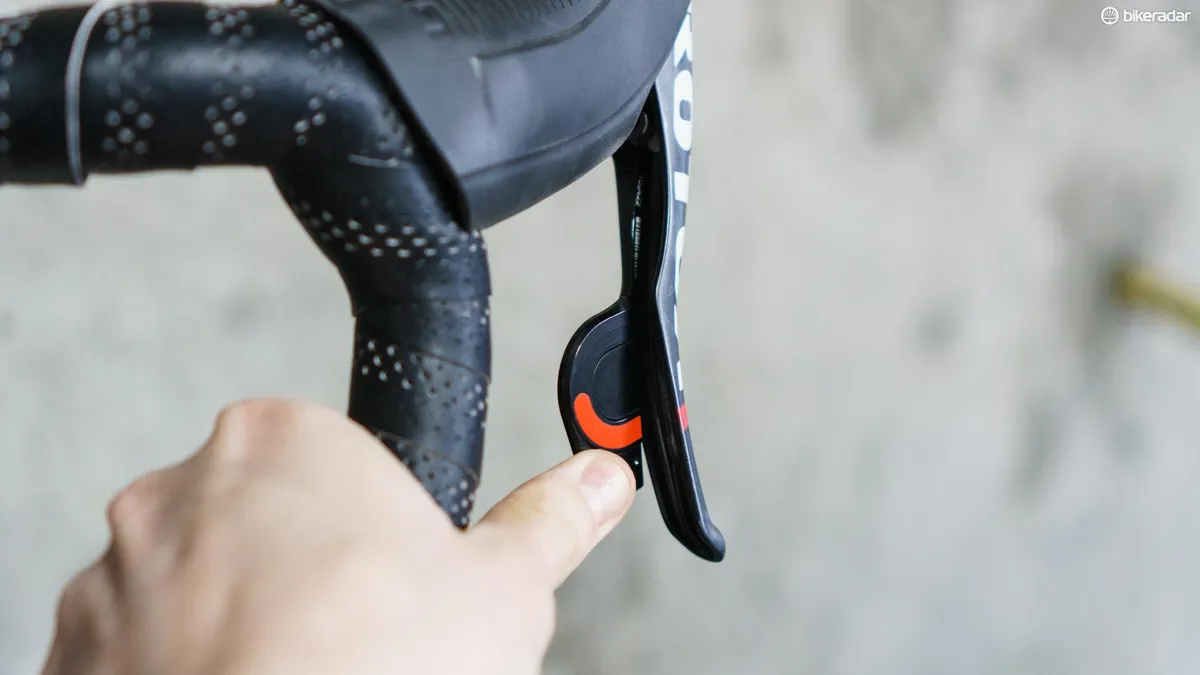
In practice, Rotor’s 1x13 shifting works in much the same way as SRAM’s DoubleTap, with a small movement of the paddle shifting up a gear and a slightly longer stroke shifting down a gear. Continuing through this stroke allows you to drop down up to three gears at once.
Unlike every other groupset out there, the indexing of Rotor’s 1x13 drivetrain is built into the derailleur. Mainstream mechanical groupsets have their indexing built into the shifter.
As the indexing of the 1x13 groupset is built into the rear derailleur, there is less tactile feedback to confirm that you’ve shifted compared to a conventional mechanical or electronic groupset. This takes some getting used to.
When shifting up or down a cog, there is a soft but perceptible click. These shifts feel great in both directions and are very fast. They also work very well under power.
However, when shifting multiple gears up the cassette, there is no feedback — you quickly learn where the gears are located on the lever stroke, but I'd have still appreciated some kind of in-built detent to provide tactile feedback.

There is also a not inconsiderable amount of resistance when shifting up multiple gears. This resistance doesn’t feel like anything binding or a sticky cable, it is just physical resistance. The throw of the shifter — which is not adjustable — is also quite long, even for my long phalanges.
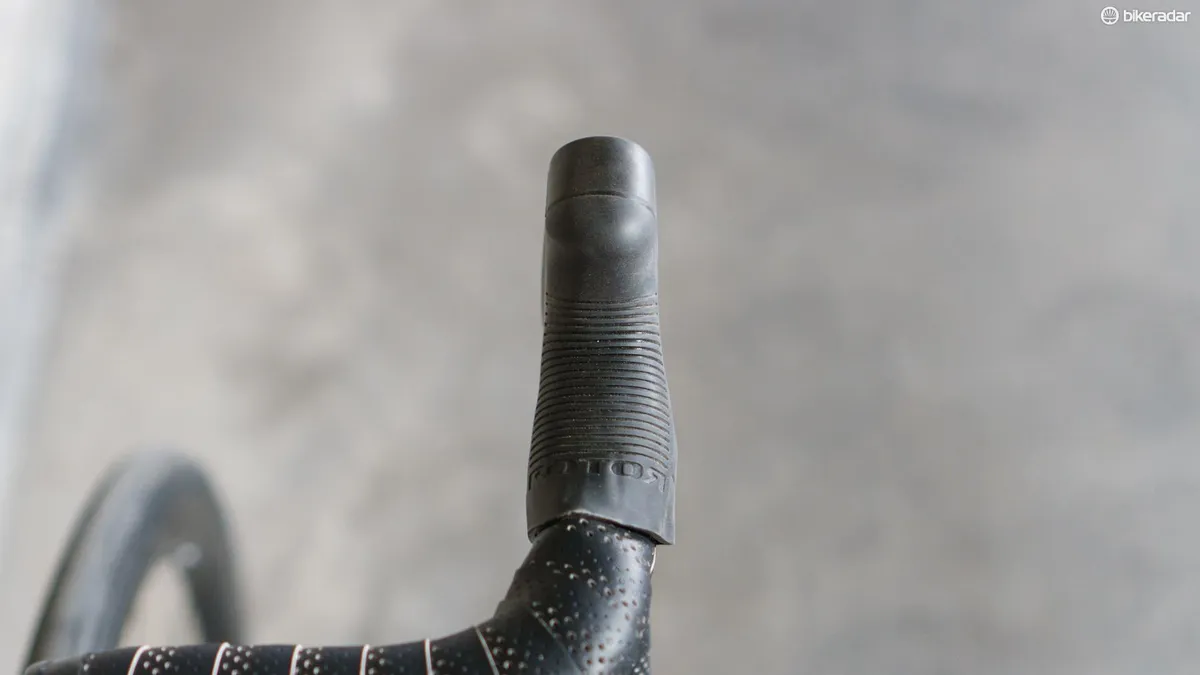
The overall shape of the shifter, which is a carryover from Rotor’s previous-generation UNO groupset, is good but not perfect — the tops of the hoods are large and flat, which makes it a very comfortable place to spend many hours. The shifter paddle extends quite far back towards the bar, easing shifting from the drops.
The hoods are quite tall however, coming in at 52mm. Wielding my trusty calipers, this is considerably bigger than a SRAM eTap hydro lever’s 43mm or a Shimano Ultegra disc lever’s 45mm.
I should stress that there’s no doubt in my mind that muscle memory and familiarity plays a part here.
Our expectations of how a shifting system should work and feel are largely defined by the ergonomics of other systems. After having exclusively ridden the 1x13 groupset for a few rides, I began to use the system more intuitively.
Overall, I neither love nor hate the shifting ergonomics of the 1x13 system. The vagueness and resistance on multiple upshifts is a bit frustrating, but the speed and accuracy of single shifts is very impressive.
What is it like to ride a 13-speed groupset?
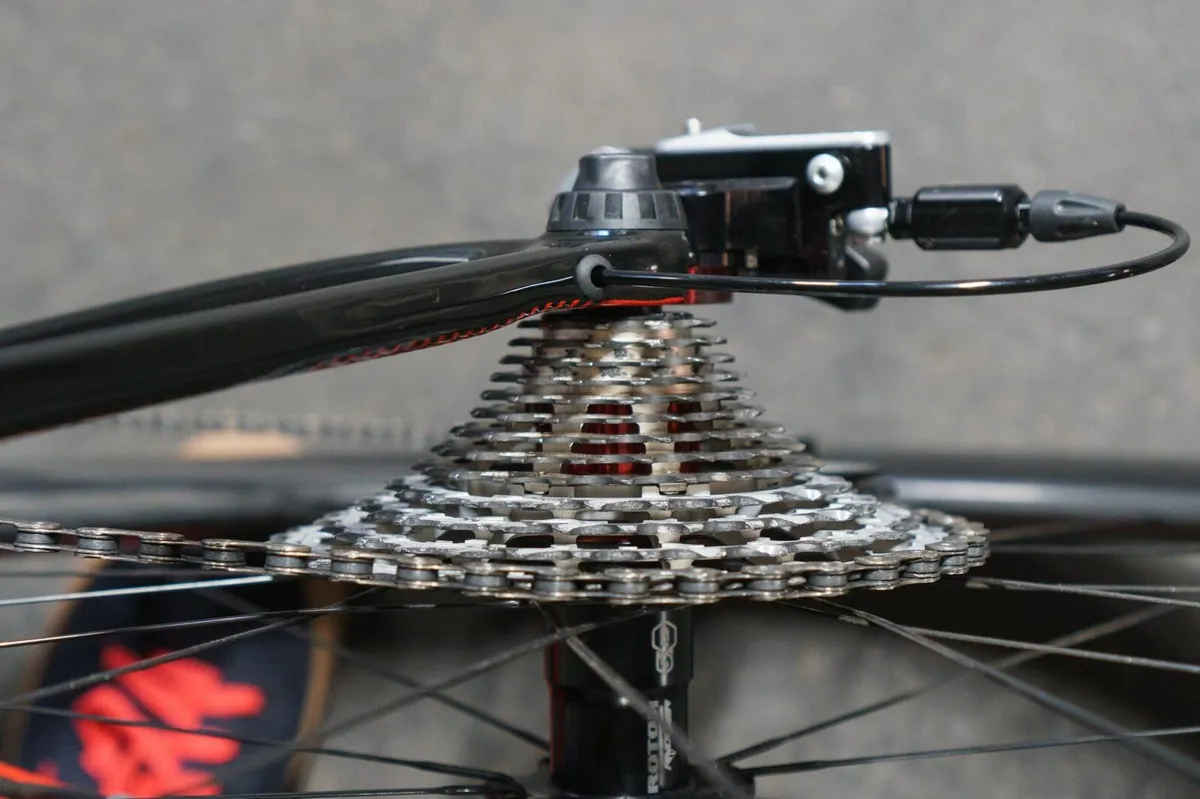
The jump from a 12-speed cassette to 13-speed is certainly very welcome on the bike.
My Argon 18 Gallium Pro test bike was built with a 46t oval Rotor Q-Ring, which was matched with a 10-36 cassette. This was an appropriate match for the bike and gave more than enough range to tackle steep climbs and fast descents across my test rides.
The steps between gears, particularly at the top of the cassette, are definitely less pronounced than on a typical 11-speed 1x setup. I have yet to ride a 1x12 drivetrain on the road, so cannot draw comparisons with this.
Rotor offers enormous customisation and heaps of guidance on how to choose the right gearing for you on its 1x13 microsite, which is well worth reading if you’re considering buying the groupset.
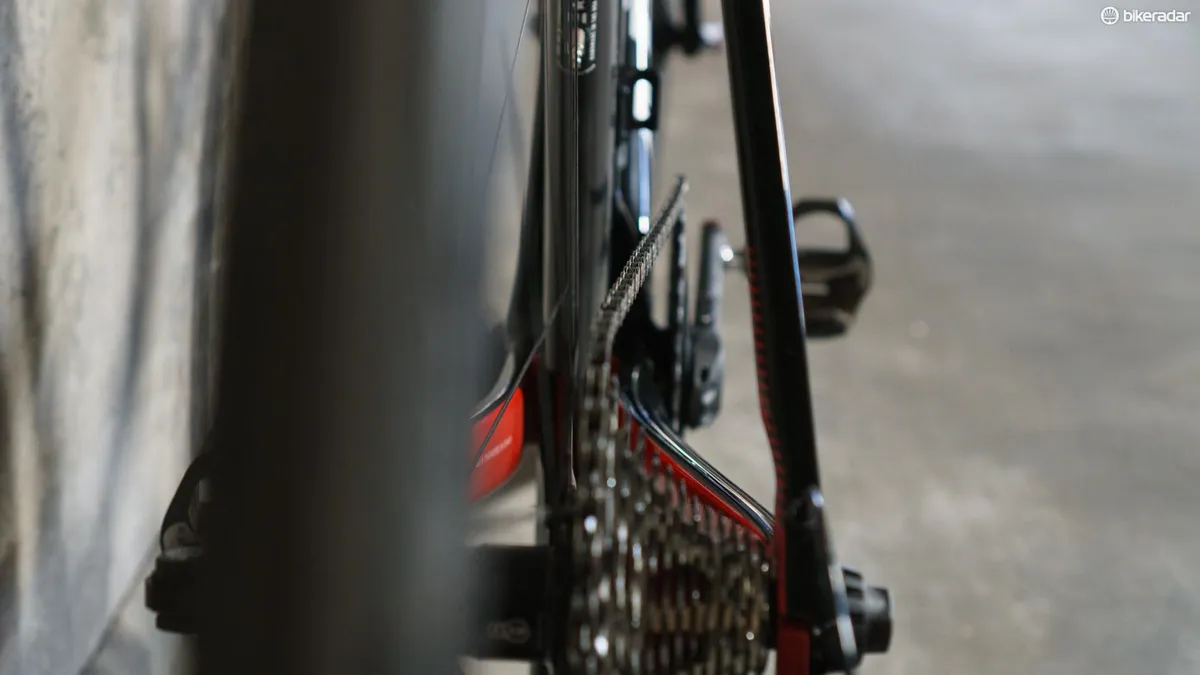
The 1x13 groupset essentially adds an additional cog onto a 12-speed-wide cassette without decreasing the spacing between individual cogs. This means the chain has to perform impressive acts of contortion at the extreme ends of the cassette.
As such, if you’re the sort of cyclist who wants a completely silent drivetrain, Rotor’s 1x13 groupset — and, to be fair, any other 1x drivetrain — will not be for you. It’s perfectly well mannered in the middle of the block but makes a bit of a racket in the very largest cog.
I imagine this would settle down with time but it would be unrealistic to expect any chain in such an extreme chainline to be silent.
On the other hand, the inclusion of a clutch — which is necessary to keep the chain in place on a 1x drivetrain — was also very welcome for general riding. It’s not until you’ve ridden a road bike equipped with a clutch that you realise quite how noisy a regular drivetrain is on rough roads.
Rotor 1x13 brakes
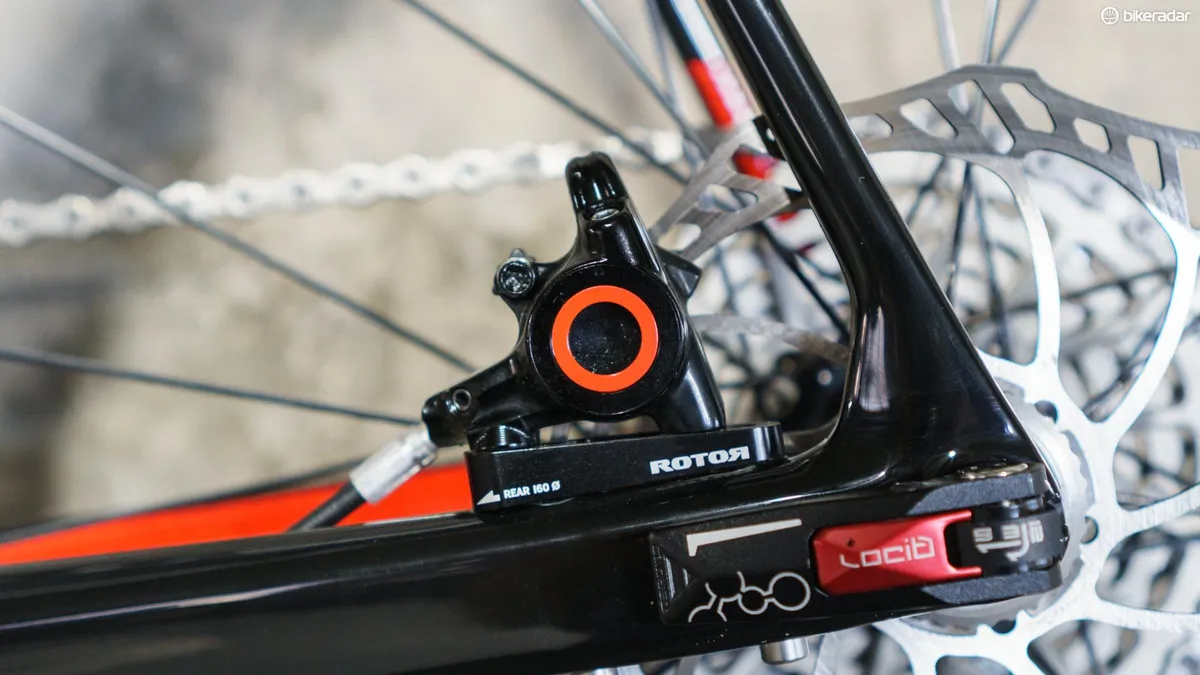
The Rotor 1x13 groupset’s brakes, which are produced in collaboration with Magura, are excellent. The lever feel is similar but subtly different to Shimano’s — there is a fair bit of free stroke that is followed by a very pleasingly well-defined and sharp feel once the pads hit the rotor. Bite point is fixed but reach is adjustable.
I experienced no fade on extended descents, there is ample power on tap and, while they feel relatively sharp at the lever, modulation is also very good. The chunky calipers look and feel very substantial and I suspect the stiffness of this unit contributes to the positive brake feel.
The levers themselves are also a nice shape, with a very pronounced kicked out nib at the end of the lever keeping fingers firmly in place.
The lowest maintenance drivetrain on the market?
As already mentioned, the limited testing period means I'm not able to comment on the longevity of the groupset at this stage but I can make some observations.
The fully sealed hydraulic system results in what Rotor claims to be a drivetrain that requires less maintenance than more traditional setups. Rotor also claims that the simplicity of the shifters — which are essentially just a hydraulic switch — coupled with the indexing built into the derailleur, keeps shifting accurate for longer.
On my first ride, the indexing was very slightly off — nothing unusual on a new bike — but the feel of the 1x13 drivetrain in these circumstances is quite different to a typical drivetrain.
With a conventional drivetrain, depending on how far off the indexing is, it often feels as though the shifts are hesitant or that, when under power, the drivetrain could skip up or down a cog.
The 1x13 groupset is quite different in this scenario — although the drivetrain is slightly nosier, shifts never felt hesitant and I could hammer as hard as my winter-weakened legs would allow without fear of skipping.
It’s hard to determine exactly why this is, but the rock-solid build of the derailleur and, I suspect, the inbuilt indexing, is at least partly responsible.
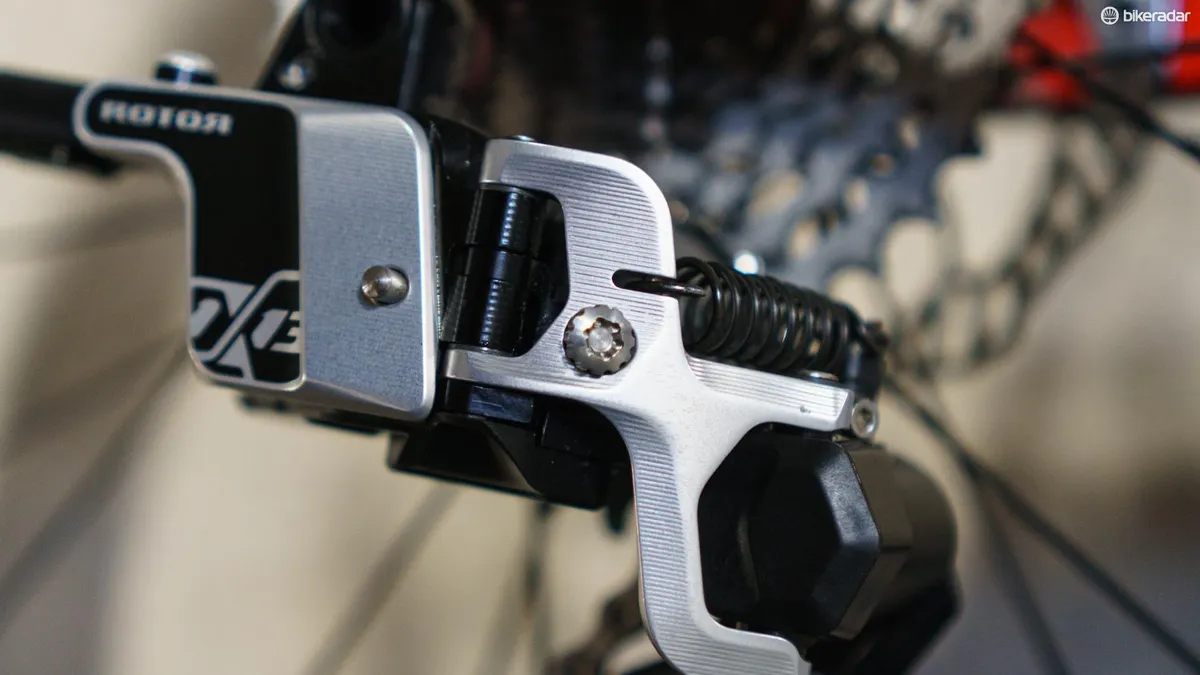
The main alignment adjuster is supposedly tool free, but truthfully I found its sharp edges a little too harsh. There is a Torx head on this to aid adjustment but, inexplicably, it's a T30. I have no issue with it being a Torx head but opting for the larger size over the T25 commonly found on multitools is inexcusable.
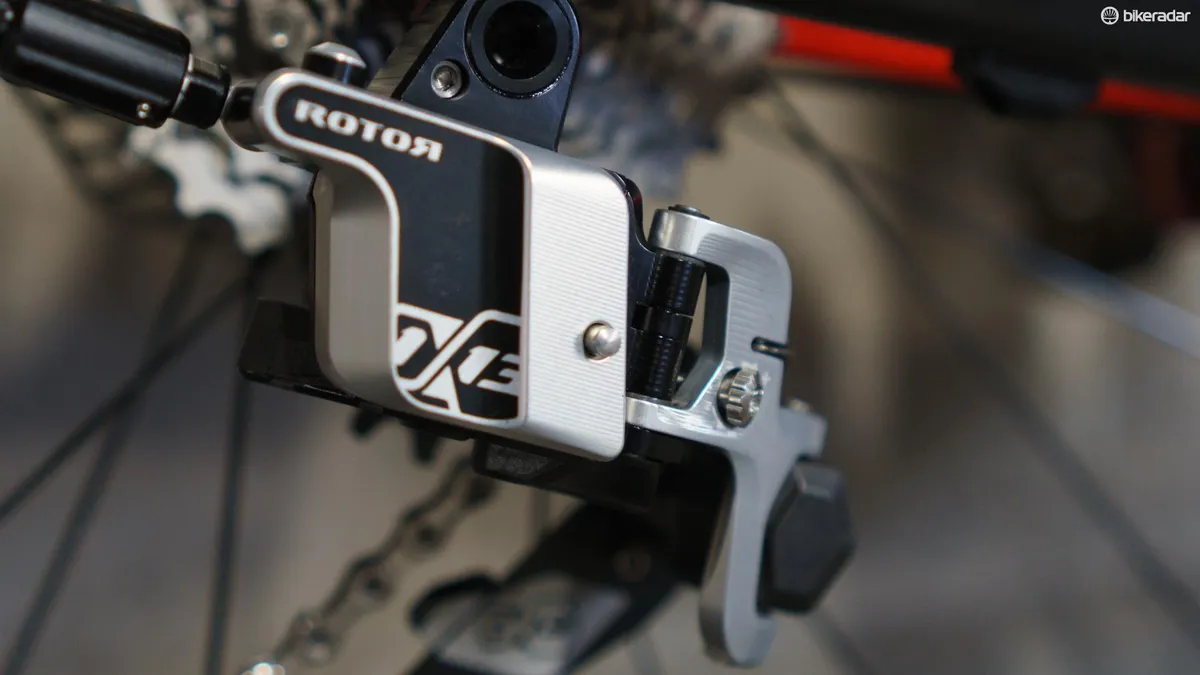
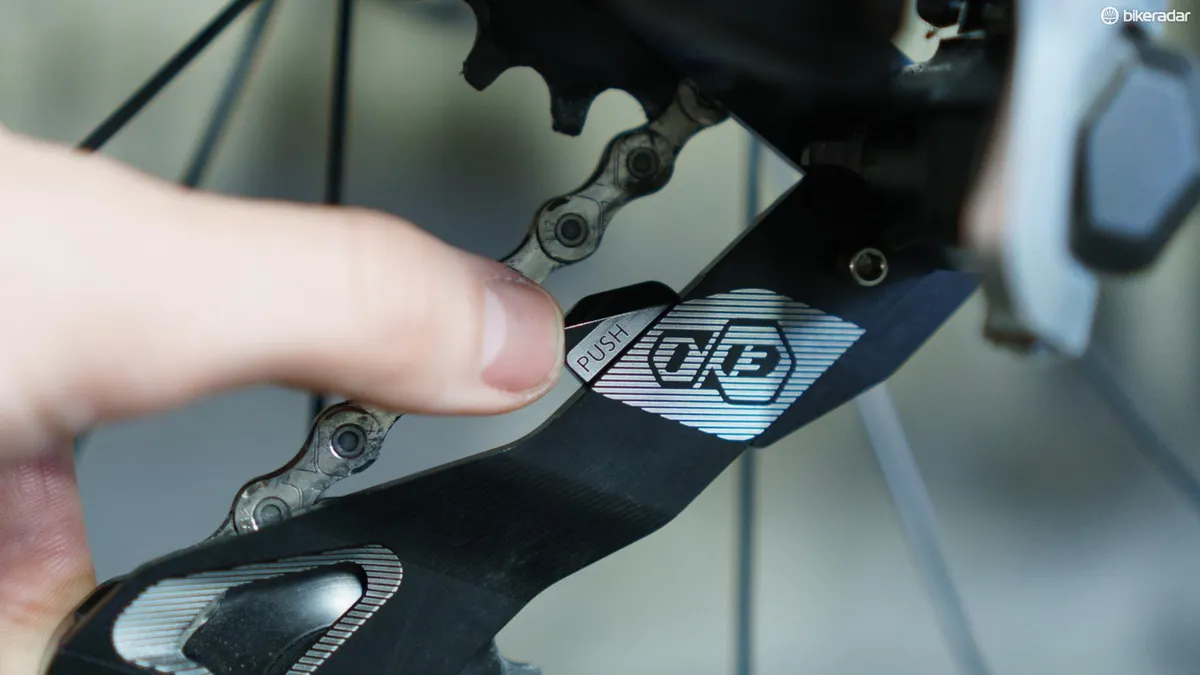
The Go To Origin button, which shifts the derailleur to the smallest cog for wheel removal, is more useful than you might imagine. Likewise, the Quick Extract pulley clasp, which disengages the clutch to aid wheel removal, is also really nice to use.
Rotor 1x13 groupset crankset and hubs
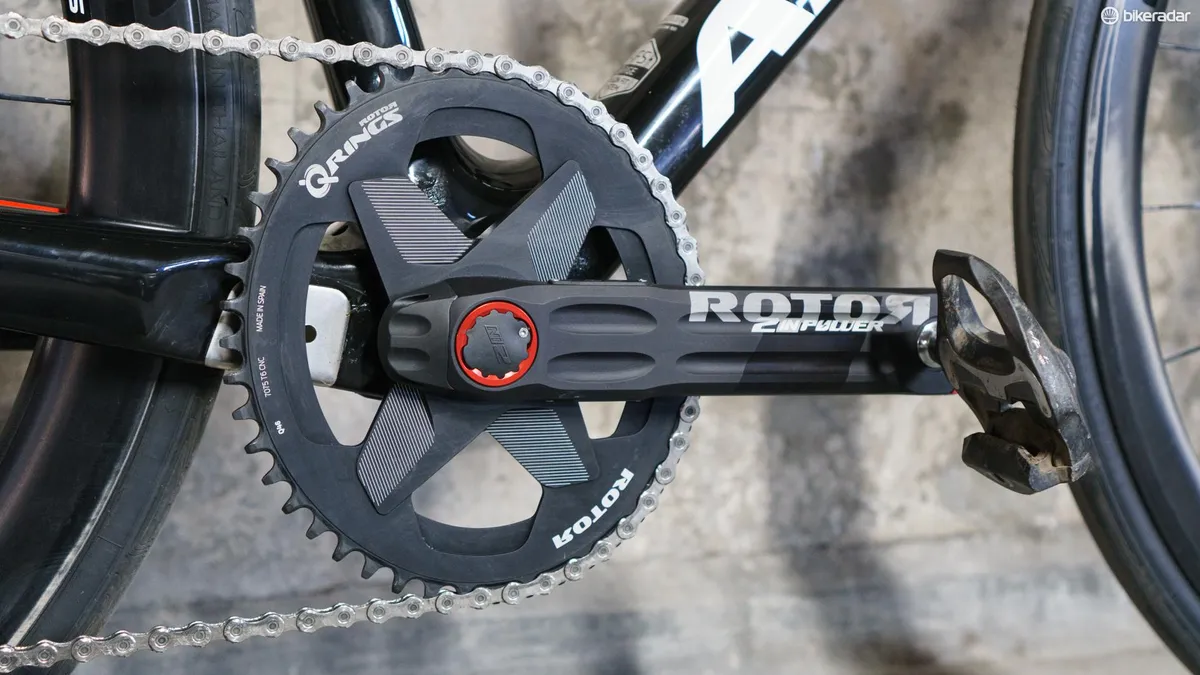
Depending on the package you opt for, the groupset is available with or without a power meter-equipped crankset. My bike was fitted with Rotor’s 2INpower dual-sided power meter cranks.
We’ve had good experiences in the past with the mountain bike version of the crankset, and, likewise, this version gave me absolutely no problems — battery life was good, power readings appear consistent and they are very stiff.
The groupset is available with regular round rings or Rotor’s oval Q-ring system. I’ve used oval rings in the past, but this was my first time using Rotor’s take on them.
For what it’s worth, considering the limited test period, I really, really liked them. I can’t comment on whether they improve power output or not, but they certainly feel good.
This is a subject for another article but, if you get the chance, I’d suggest you give them, or a similar system, a try.
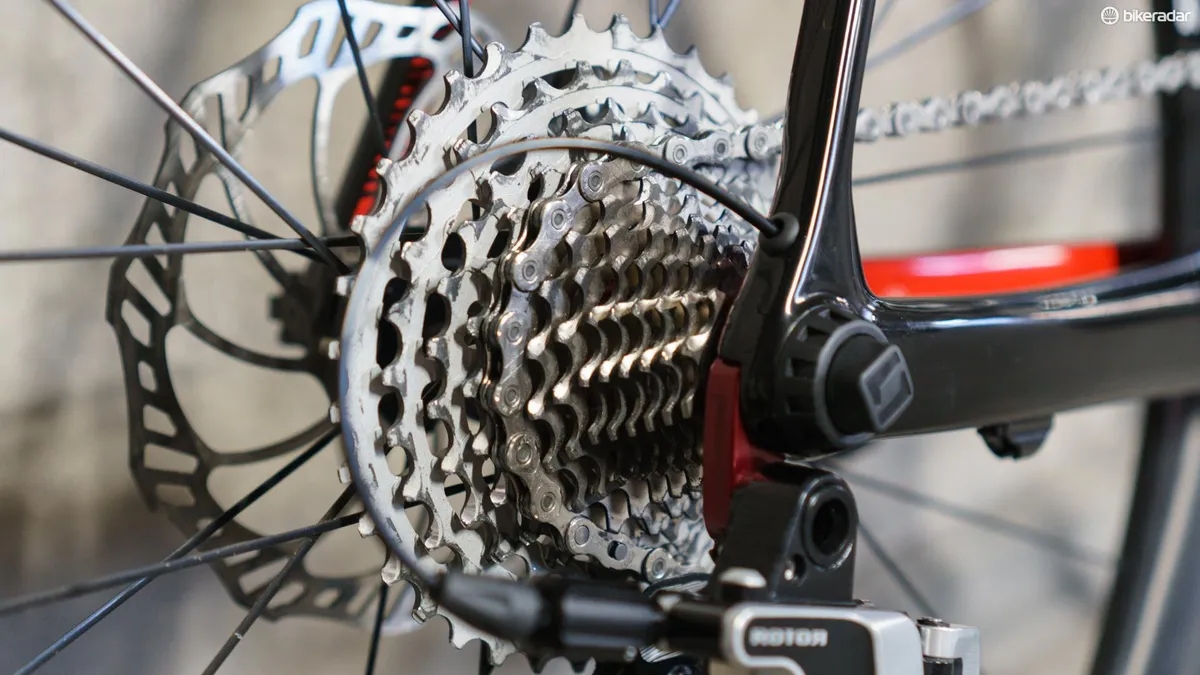
The 13-speed version of the 1x13 groupset requires a longer-than-average Shimano HG-style freehub. This means that you are currently limited to using Rotor’s own RVOLVER (vowels make you slower) hubs. These launched back in 2017 when we published a full run-down of how they work.
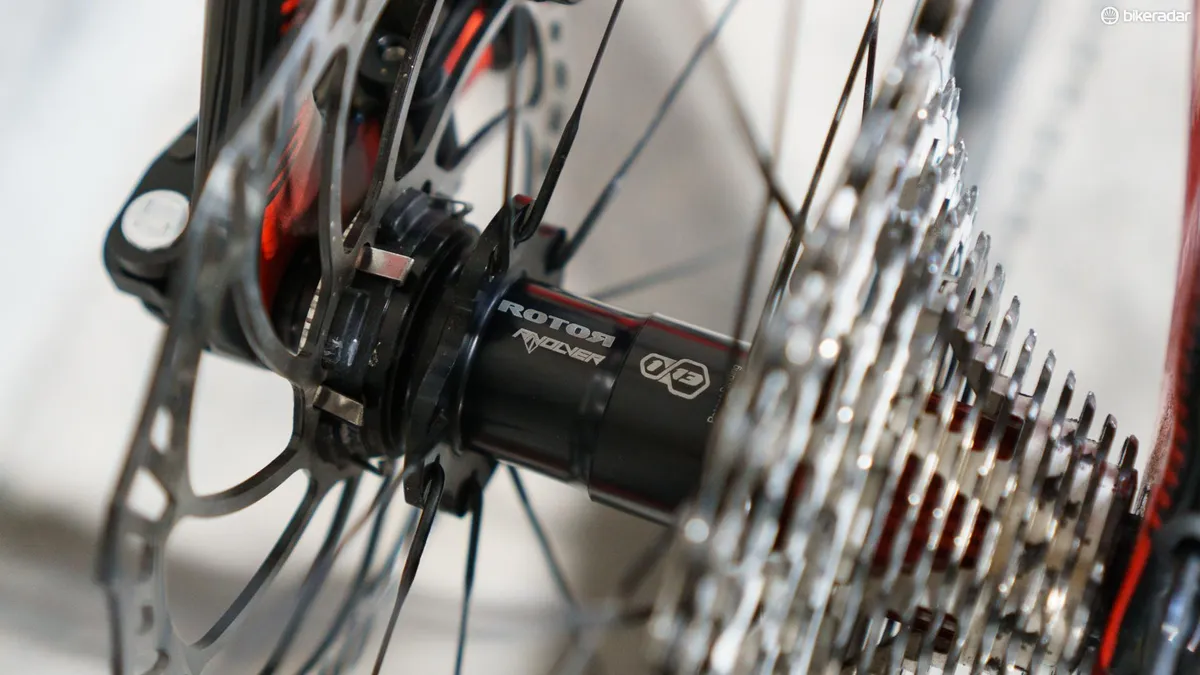
As a self-confessed hubsessive, I find the idea of being limited to a single option slightly distressing. Mercifully, it appears to be a good one — engagement on the hubs is fast, they at least appear to be very fast rolling and, most importantly, they make a wonderful metallic hum while coasting. Freewheeling noise is how everyone measures a hub’s worth, right?
Rotor 1x13 vs the competition
As is probably clear by now, I don’t think it’s fair, or particularly useful, to draw too many close comparisons between Rotor’s 1x13 groupset and its competitors — it’s a very different product that will appeal to a very different segment of the market.
That said, the groupset does not exist in a vacuum, so it is worth considering how it compares in certain areas — in this case, with SRAM Red eTap AXS.
Rotor 1x13 cost
No one is going to claim for a moment that the 1x13 groupset is affordable — prices start at £2,299 / $2,800 / €2,599 for a ready-to-ride package that includes a wheelset. The top-flight groupset, which includes a 2INpower power meter and a carbon wheelset comes in at £3,999 / $4,900 / €4,499.
This package is actually cheaper than SRAM’s newly-released eTap AXS — the equivalent power meter-equipped groupset from SRAM would set you back £3,349 / $3,648 / €3,618. SRAM’s price doesn’t include a wheelset either, so you can’t accuse Rotor’s 1x13 of being the most outlandishly expensive option out there.
Rotor 1x13 weight
Working from the weights outlined in our previous article, Rotor claims a total groupset weight of 2,550g for our setup with a 48t chainring, a 10-36t cassette, uncut hoses and an uncut chain.
Again, turning to SRAM Red eTap AXS as a comparison, this groupset with a 48/35t crankset, a 10-28t cassette and an uncut chain would come in at a claimed 2,518g. Bear in mind this is for a 2x groupset, so a very impressive achievement from SRAM.
Why would I buy Rotor’s 1x13 groupset?
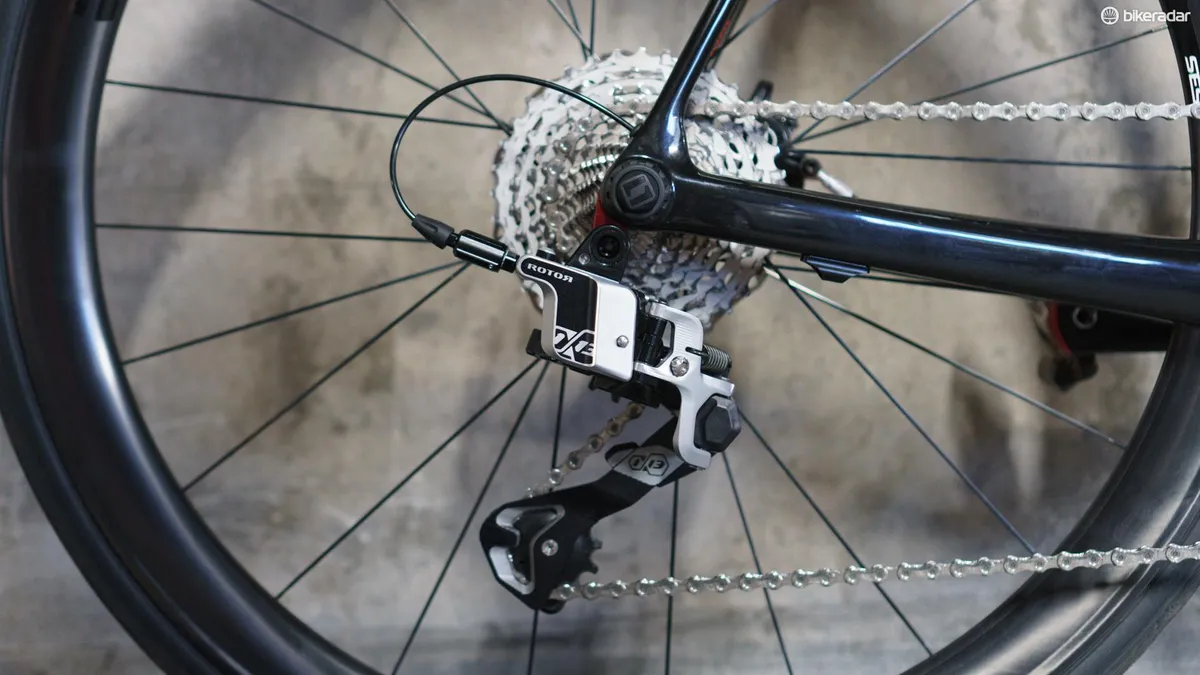
Rotor 1x13 isn’t the lightest groupset on the market, it’s expensive (but not the most expensive) and the shifting is good but not perfect — so why would you even consider buying it?
For some riders, being different will be reason enough. Rotor 1x13 is the best at being the world’s only 13-speed hydraulically-actuated groupset and that alone makes it special.
I can’t deny that even I, a young man who is regularly spoilt with the finest cycling swag, fell for this trap. It’s an engineering marvel and I admire Rotor for having the guts to continue developing its concept.
The potential of a super-low-maintenance drivetrain is also deeply appealing, and the additional cog is very welcome — a step closer towards that ‘magical’ 14-speed drivetrain (yes, I know Rolhoff hubs are a thing, no need to remind me in the comments).
If Rotor could nail the shifting ergonomics, the groupset would become a more attractive option. As the current shifters are a carry-over from UNO, I think it’s likely we'll see a revision of these at some point, but that's just speculation.
In the meantime, I don’t think I could defend buying the groupset as a rational purchase, although at this end of the market, buying decisions are rarely rational — when something like 105 performs so spectacularly, why would you buy Dura-Ace after all?
To conclude, if you're a rider who appreciates owning unique kit that sits at the cutting edge of cycling tech, and you can see past these small issues, this groupset is unlikely to leave you disappointed.

